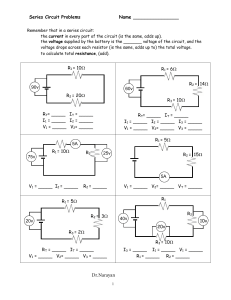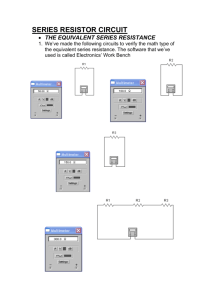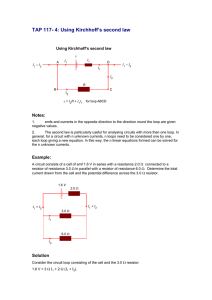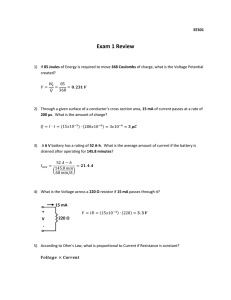Phy 122 – Assignment 4 A 2.
advertisement
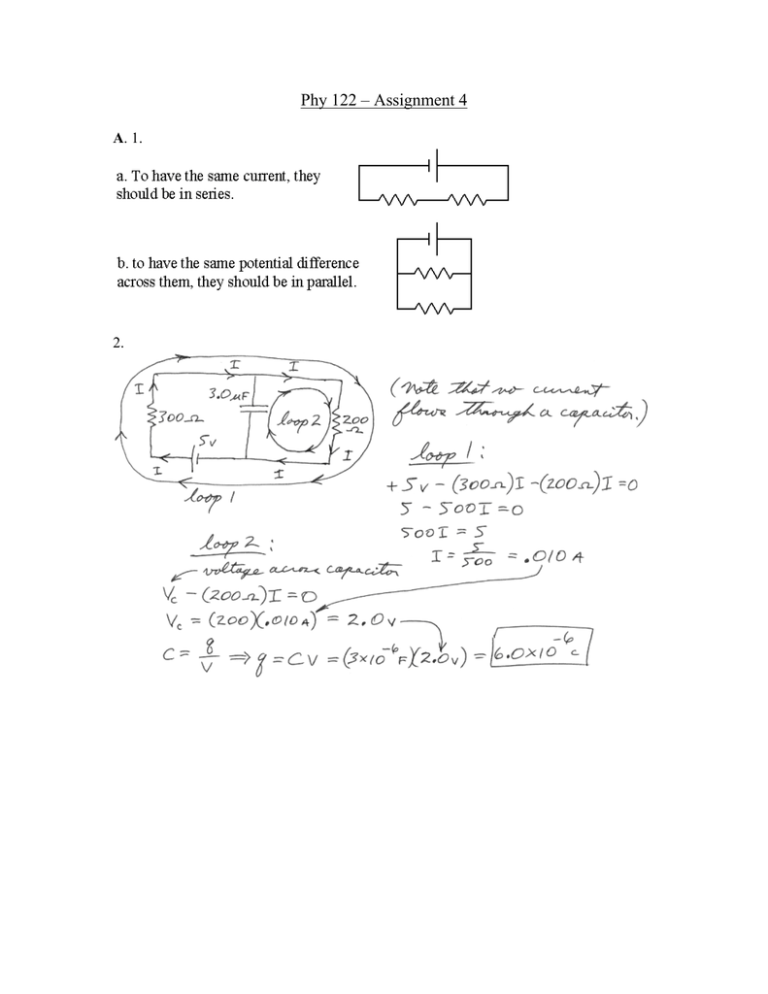
Phy 122 – Assignment 4 A. 1. 2. B. 1. Less than: If R is the resistance of one, 2. Power = VI. Find the resistor’s voltage and current, then multiply them. Apply point rule to P: Total in = total out. 6.0 A = 4.0 A + I I = 2.0 A Apply loop rule to the loop shown at right: 28 V – (6 A)(3 Ω) – VR = 0 28 – 18 = VR 10 V = VR P = VI = (2 A)(10 V) = 20.0 W C. D. 1. Every term in the summation should be a voltage. The I2 term has amps for its unit, not volts. 2. Loop around the outside of the circuit: 2 V – (I1)(4 Ω) = 0 4 I1 = 2 I1 = 2/4 = .500 A (An ideal ammeter has no resistance. It acts just like another piece of wire would, and so contributes nothing to the equation.) Loop around the right half: + 5 V – (I2)(9 Ω) – 2V = 0 9 I2 = 3 I2 = 3/9 = .333 A Point rule: I1 = I2 + I3 .500 = .333 + I3 I3 = .167 A E. 1. Loop around the outside of the circuit: +12 V – (resistor voltage) + 6 V = 0 Resistor voltage = 18 V ans. (The rest of the circuit doesn’t matter.) 2. So, the actual circuit is equivalent to this: 3R and 6R are in parallel: 1 1 1 Req 3R 6R 1 2 1 Req 6R 6R 1 3 Req 6R Req 6R V = I (Req) 9 = (2)(2R) 9 = 4R R = 9/4 = 2.25 Ω 3 2R





